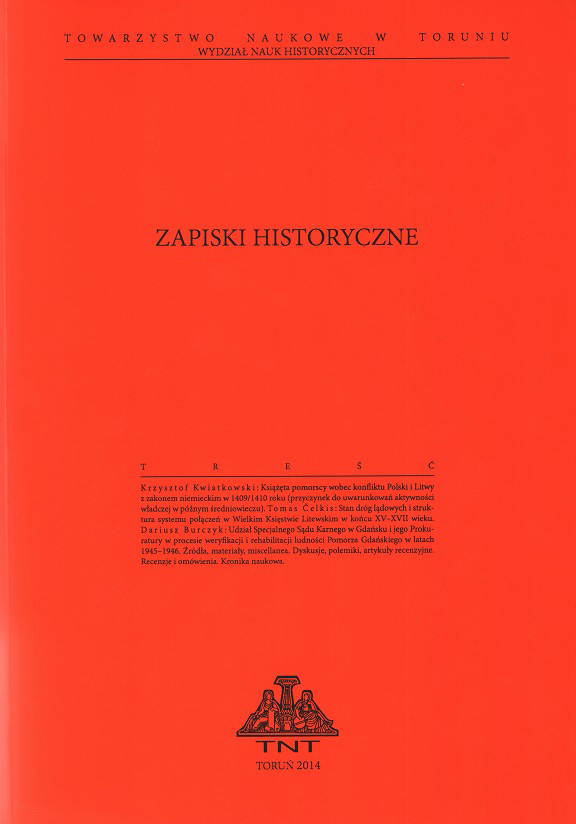Rasa w mieście
Race in the City
The Reflections of Houston Stewart Chamberlain and Theodor Fritsch Rooted in German Volkism
Author(s): Mateusz MaleszkaSubject(s): History of ideas, Political history, 19th Century, Pre-WW I & WW I (1900 -1919), Fascism, Nazism and WW II, History of Antisemitism
Published by: Towarzystwo Naukowe w Toruniu
Keywords: racism; anti-Semitism; Volkism; Nazism; city; Theodor Fritsch; Houston S. Chamberlain
Summary/Abstract: Racist ideology permeated every element of the Third Reich’s society. Art historians have focused on the problem of Nazi urban projects since the 1960s. Issues related to older concepts from the 19th century were on the margins of the research. Thus, sources of inspiration for Nazi urban solutions remained unexplored. The article aims to complement the current considerations with an analysis of the oldest accounts that constitute a synthesis of racist and urban thought. The problem of rebuilding cities in a “a proper way that corresponded the German spirit” was raised in the mid-19th century. The ‘heralds’ of national socialism at the turn of the 19th and 20th centuries – Theodor Fritsch and Houston Stewart Chamberlain synthesized the traditional German thought with scientifically founded racist anti-Semitism. With the help of textual analysis of their works, several assumptions common to both authors can be observed. They both called for the simultaneous reconstruction of cities and the reorganization of social life by introducing racial and class segregation. The urban buildings were to reflect the hierarchical social structure. Factories of heavy industry were to disappear from the cities (they were to be hidden underground or on the outskirts); they also wanted to eliminate environmental pollution and allow residents to contact with nature thanks to extensive garden complexes. At the same time, people with less desirable racial attributes were to work on the outskirts of the city, carrying out subordinate professions and maintaining racist utopias. The popularity of both authors among the Nazi circles (even before 1933) contributed to the incorporation of their propositions into the ideology of the Nazi Party. The strong influence of slogans proclaimed by anti-Semitic radicals is visible, e.g. in in the case of Alfred Rosenberg or Richard W. Darré. They wanted to return to the so-called old Aryan values, which were to include living in harmony with wild nature. The implementation of these postulates would have involved the reconstruction and limitation of the size of most of the then urban complexes, which was to take place according to the assumptions formulated before the First World War.
Journal: Zapiski Historyczne
- Issue Year: 84/2019
- Issue No: 3
- Page Range: 81-99
- Page Count: 19
- Language: Polish

